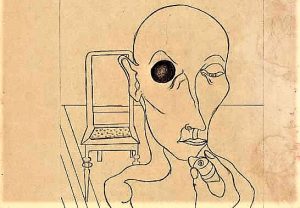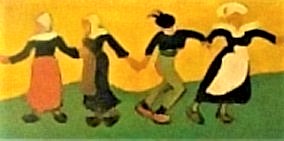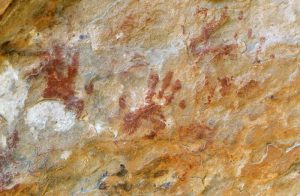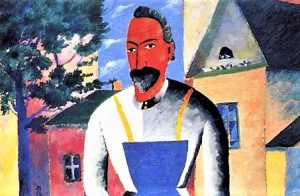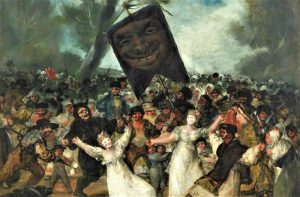Dadaism
Dadaism was an artistic and literary movement that began in Zurich, Switzerland. It emerged as a reaction to World War I and to the nationalism that many thought was responsible for leading them to war. Influenced by other avant-garde movements such as Cubism, Futurism, Constructivism and Expressionism, his production was tremendously diverse, from interpretation to poetry, photography, sculpture, painting and collage.
What is dadaism?
It is an artistic movement that was born in Switzerland and that was against art, the codes and values that existed at that time, against the First World War and against established systems. It was an ideology and a way of life for many of his followers.
The aesthetics of dadaism, marked by the mockery of materialist and nationalist attitudes, demonstrated a powerful influence on artists in many cities, including Berlin, Hanover, Paris, New York and Cologne, who generated their own groups. The movement dissipated with the establishment of surrealism, but the ideas it gave rise to become the cornerstones of various categories of modern and contemporary art.
Characteristics of dadaism
The main characteristics of dadaism are the following:
- It emerged as a protest against the conventions of the time.
- They were characterized by an attitude of mockery and humor and were based on absurd things and on what had no value.
- They used ways of expression full of satire and irony and used gestures to incite provocation.
- The poems that emerged from dadaism were illogical or could not be understood as they were merely a succession of words and sounds.
- They liked doubt, rebellion, destruction, terrorism, death and nihilism.
- They encouraged change, the freedom of the individual, spontaneity, the immediate, the random, contradiction, chaos, the imperfect, intuition.
- They were against beauty, eternity, laws, purity, the universal, reason, meaning and did not believe in the construction of consciousness.
- They were very negative people who were against modernism, expressionism, cubism, futurism and abstractionism.
- They considered that the creative act was of greater importance than the created product.
History of dadaism
Switzerland was neutral during the First World War and it was in Zurich that Hugo Ball and Emmy Hennings founded the Cabaret Voltaire on 5 February 1916, in a tavern in Spiegelgasse. To attract other artists and intellectuals, Ball issued a press release which read: Cabaret Voltaire. Under this name a group of young artists and writers was formed with the aim of becoming a center of artistic entertainment.
In July of that year, the first afternoon of “Dada” was celebrated (as the movement was also known) in which Ball read the first manifesto. There is little agreement on how the word Dada was invented, but one of the most common stories of origin is that Richard Huelsenbeck found the name by throwing a random knife into a dictionary. The term “dada” is a colloquial French term meaning battle horse, but it also refers to a child’s first words, and these suggestions of childishness and absurdity attracted the group, who were willing to put distance between them and the sobriety of conventional society.
The artists from Zurich published a magazine and held art exhibitions that helped spread their anti-war and anti-art message. In 1917, after Ball moved to Bern to devote himself to journalism, Tzara founded the Galerie Dada in Bahnhofstrasse where Dada evenings were held alongside art exhibitions. T Zara became the leader of the movement and began a relentless campaign to spread Dada’s ideas, bathing French and Italian writers and artists with letters. The group published an art and literature review entitled Dada from July 1917 with five editions from Zurich and two in Paris. Her art focused on performance and printed matter.
Founders
One of the most important founders of the Dada movement was called Tristan Tzara and was born in Romania on April 16, 1896. He lived in France and, together with Jean Arp and Hugo Ball, founded the movement during the First World War.
Painting
It was one of the most important aspects of dadaism and eliminated the traditional techniques and forms that had been used. They mainly used collages with different materials and implemented and added different materials that had not been used for quite some time.
Literary art
It was characterized by calling itself a non-movement and by being against art. It was a movement that was dedicated to critique society since it had originated. They criticized the artistic traditions, structures, genres and metrics of art.
Artists
Some of the main artists of dadaism are:
- Man Ray: was one of the most important Dada photographers in the United States in the first decade of the 20th century.
- Max Ernst: considered a fundamental member of the movement, self-taught, artist, philosopher and also studied psychiatry. He developed within expressionism and captured fantastic beings in Renaissance settings.
- Marcel Duchamp: he was a pioneer in the field of sculpture, kinetic art and ready-made art. He is considered one of the most influential artists of the 20th century. He was an impressionist, a fauvists and a cubist who found in dadaism the freedom of expression that he was looking for so much.
Works of dadaism
Among the most important works of dadaism we can mention the following:
- Marcel Duchamp – “Fountain” (1917)
- Hannah Höch – “Flight” (1931)
- Marcel Duchamp – “LHOOQ” (1919)
- Florine Stettheimer – “Cathedrals of Broadway” (1929)
- Hannah Höch – “Around a Reed Mouth” (1967)
How to cite this article?
Briceño V., Gabriela. (2019). Dadaism. Recovered on 23 February, 2024, de Euston96: https://www.euston96.com/en/dadaism/
